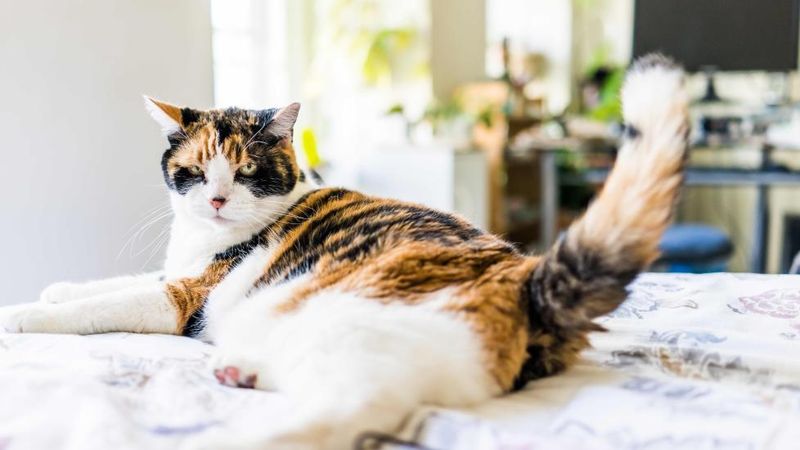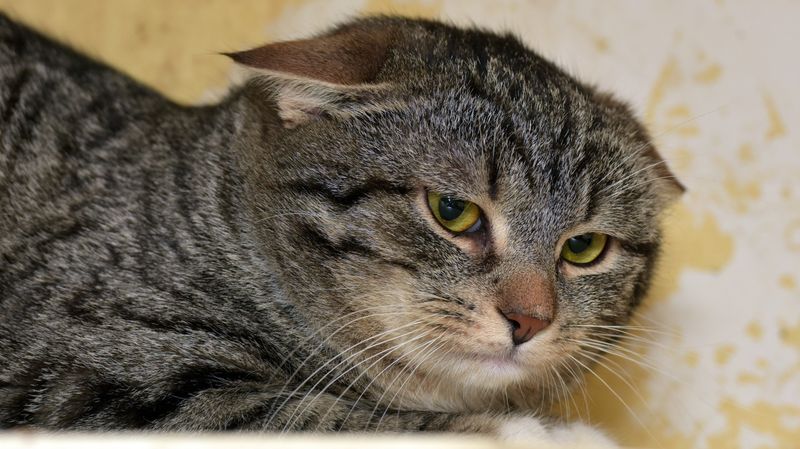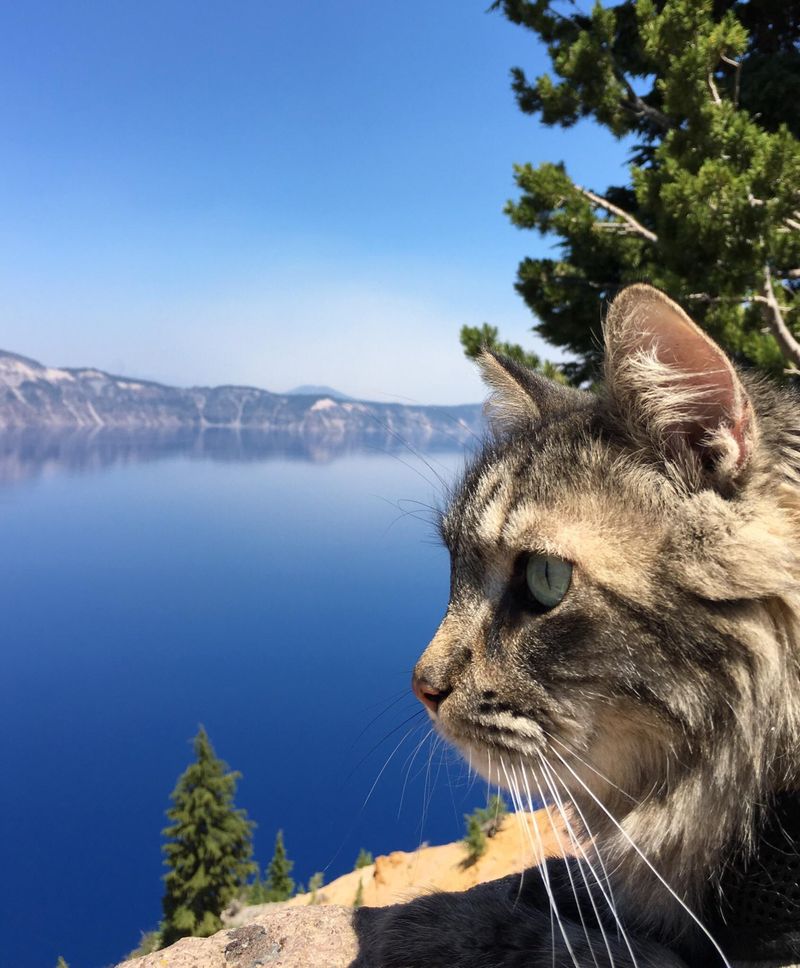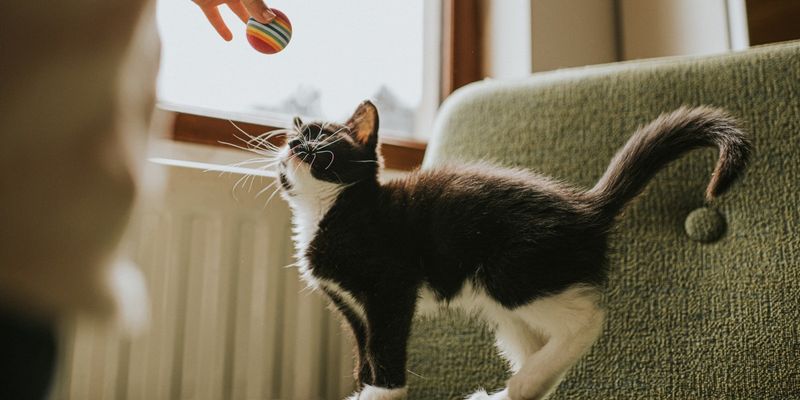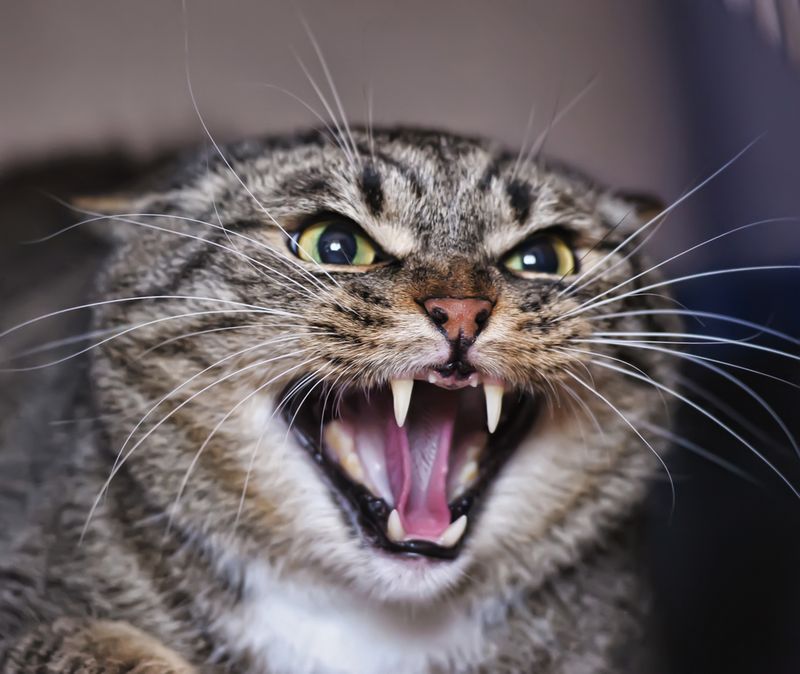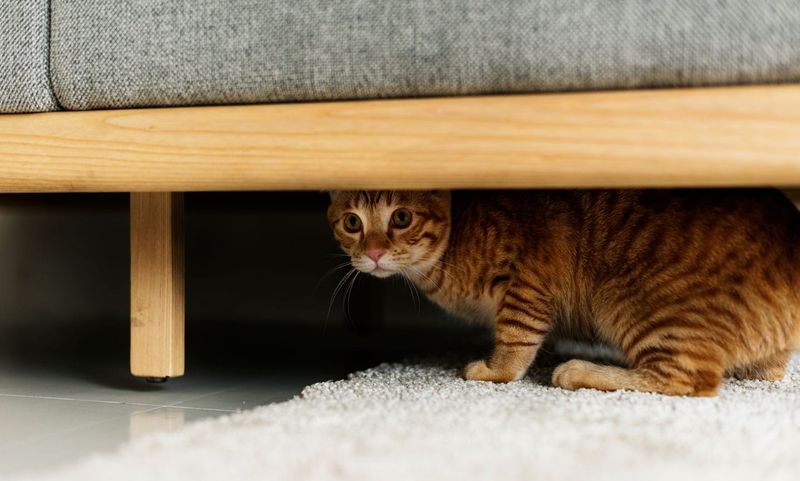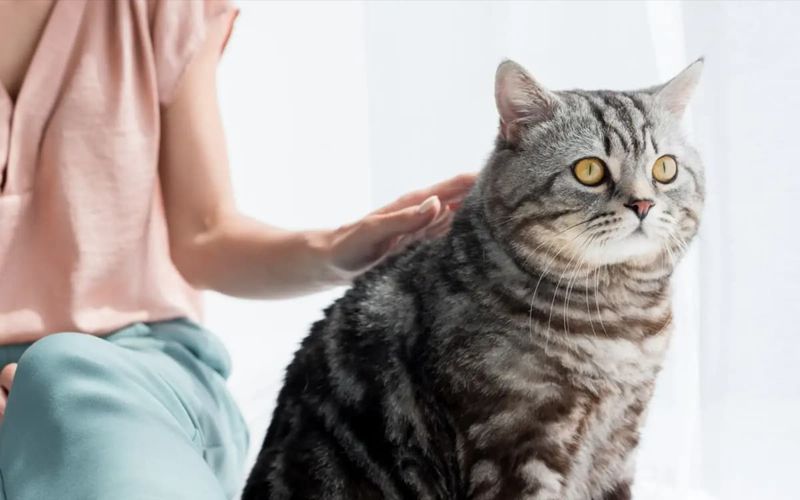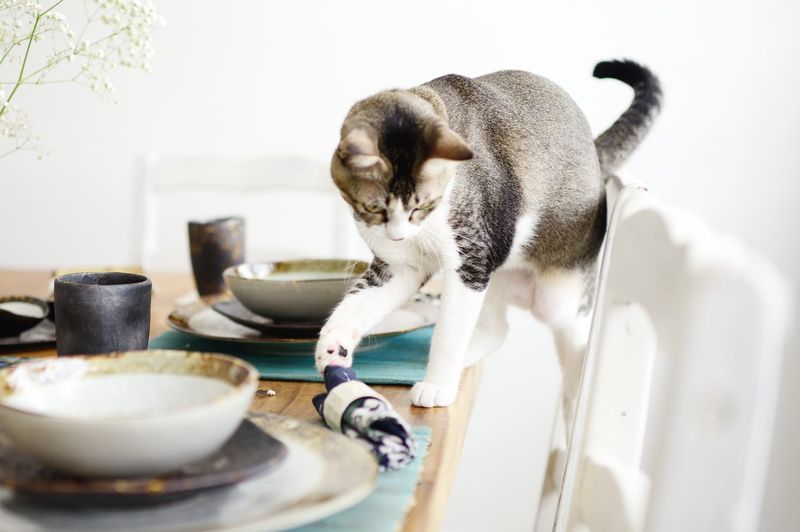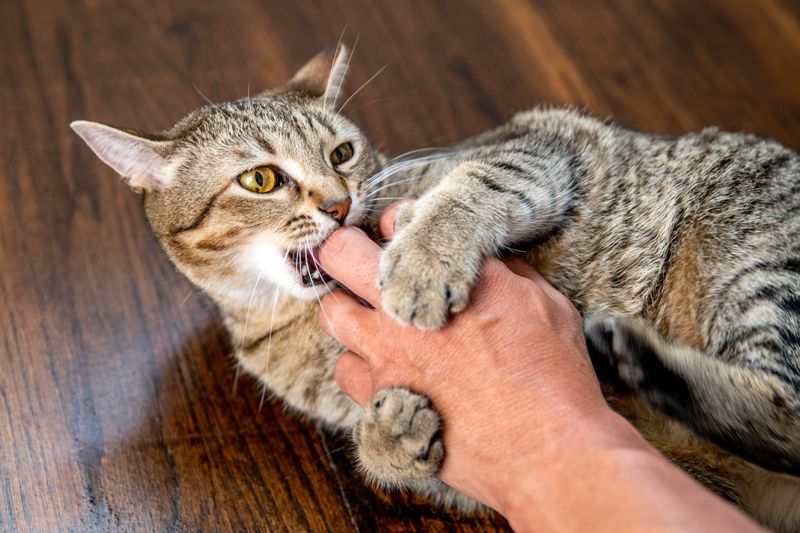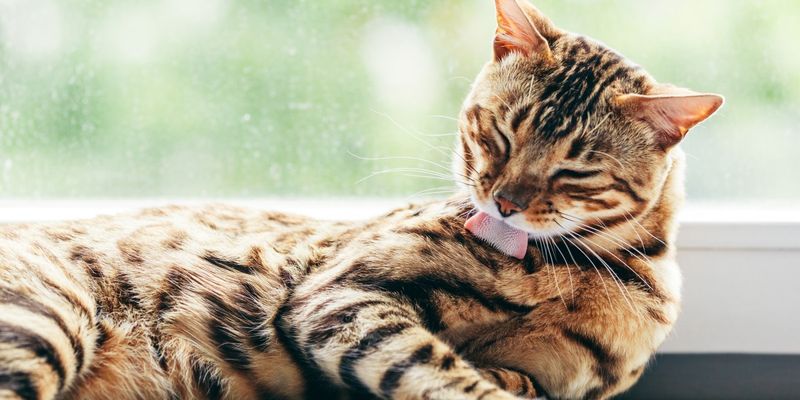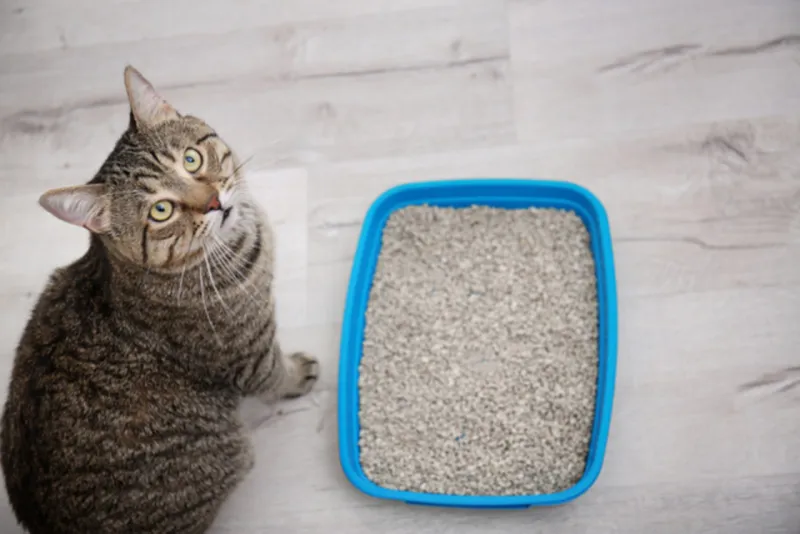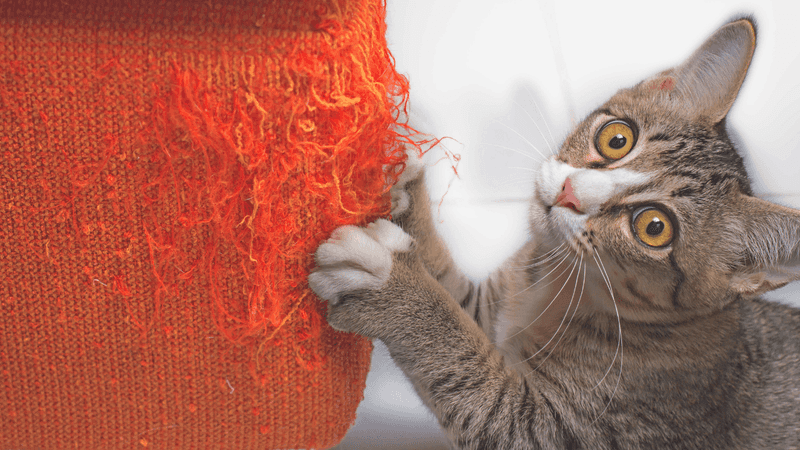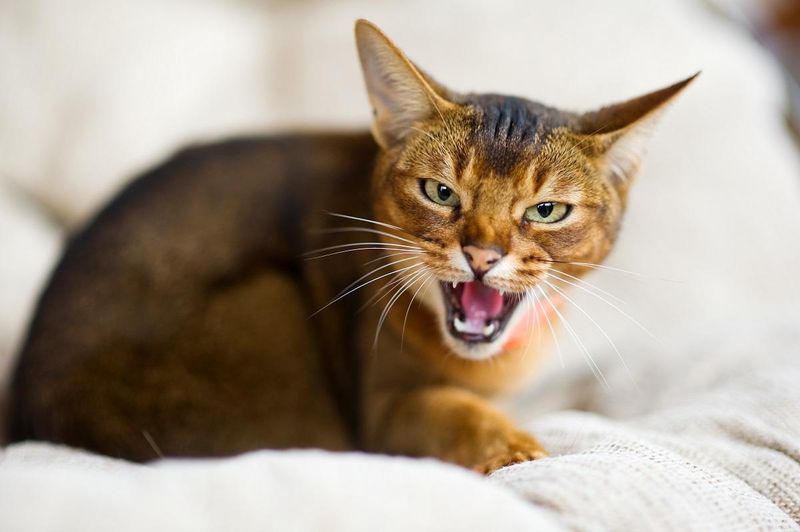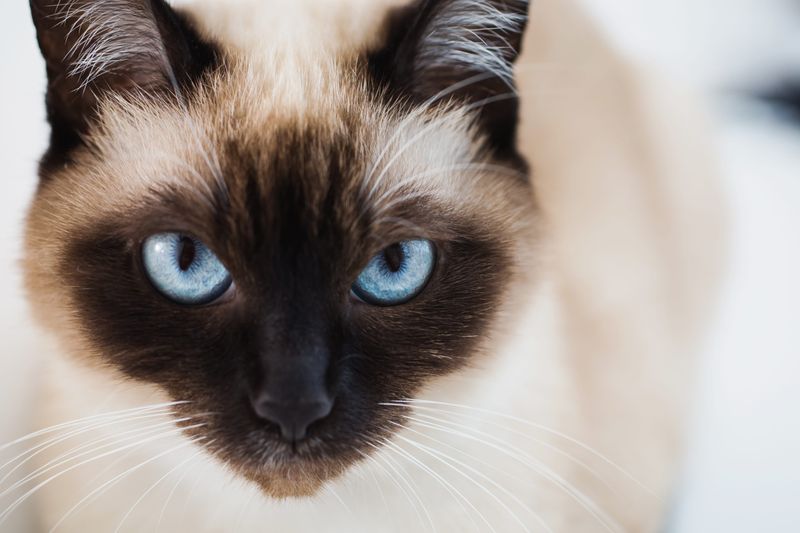📖 Table of Content:
- 1. Tail Flicking
- 2. Ears Flattened
- 3. Avoiding Eye Contact
- 4. Swishing Tail
- 5. Hissing
- 6. Hiding
- 7. Swatting
- 8. Ignoring You
- 9. Knocking Things Over
- 10. Biting
- 11. Refusing Food
- 12. Vocalizing Loudly
- 13. Excessive Grooming
- 14. Litter Box Avoidance
- 15. Scratching Furniture
- 16. Low Growl
- 17. Excessive Sleeping
- 18. Staring Intently
Cats are known for their mysterious and independent nature, but they have their ways of showing displeasure. Decoding these signals can help mend your relationship and ensure your feline feels loved and understood. Here are 18 unmistakable signs that your cat might be mad at you.
1. Tail Flicking
Does your cat’s tail flick like a whip? A flicking tail can be a clear sign of feline annoyance. Picture this: your cat perched on the windowsill, tail flicking back and forth like a metronome. It’s not just a random movement. Each flick is a message, a subtle expression of irritation or frustration. This behavior can indicate that something in their environment is not to their liking. Whether it’s the presence of an unfamiliar guest or a sudden loud noise, your cat is letting you know that they are not amused.
2. Ears Flattened
When a cat’s normally perky ears flatten against its head, it’s time to take notice. This ear position is often a signal of defense or aggression. Imagine your cat sitting there, ears pressed flat, eyes narrowing at you. This isn’t a look of affection; it’s a warning sign. Flattened ears can mean your cat is feeling threatened or agitated. It’s their way of saying, “Back off!” Understanding this sign can help you approach your pet with the care it needs.
3. Avoiding Eye Contact
Your cat’s eyes are windows to its soul. However, if they suddenly start avoiding your gaze, take note. It’s a silent protest, a feline form of giving you the cold shoulder. Picture your furry friend, once affectionate and eager, now turning its head away, refusing to lock eyes with you. This behavior can stem from a recent scolding or an unmet need. By ignoring you, your cat is communicating its displeasure. Restoring eye contact with gentle gestures can help mend this bond.
4. Swishing Tail
A swishing tail can be a sign of a cat’s mixed emotions. The rhythmic swish is more than just a movement; it’s an expression of moodiness or uncertainty. Picture your cat in the garden, tail swishing like a pendulum, eyes scanning the surroundings. This behavior often accompanies a moment of decision-making or conflict. It’s as if your cat is weighing its options, unsure of how to proceed. Recognizing this cue can help you address their needs, ensuring a happier feline.
5. Hissing
The unmistakable sound of a hissing cat is a clear sign of anger or fear. Imagine your feline, arched back, fur standing on end, emitting that sharp hiss. It’s not just noise; it’s a declaration of “Stay away!” This behavior is often accompanied by other defensive postures. Hissing occurs when a cat feels cornered or threatened. Understanding the cause of this reaction can help you create a safer and more comfortable environment for your pet.
6. Hiding
Is your cat suddenly elusive, finding the most obscure places to hide? This behavior can be a sign of stress or displeasure. Picture your once outgoing kitty now tucked away under the sofa, peering out with wary eyes. Hiding is often a cat’s way of seeking security when feeling overwhelmed. Whether it’s due to a new pet in the house or changes in their routine, recognizing this sign is crucial. Providing comfort and reassurance can help coax them back into the open.
7. Swatting
A swift swat from your cat can be more than just playful antics. It can indicate irritation or disapproval. Imagine your cat, eyes narrowed, delivering a quick swat at a dangling toy or even your hand. This behavior is not merely about play; it’s a feline way of setting boundaries. Cats may resort to swatting when their personal space feels invaded or if they’re overstimulated. Recognizing this sign helps ensure you respect their boundaries, fostering a harmonious relationship.
8. Ignoring You
Have you noticed your cat suddenly ignoring you, acting as if you don’t exist? This silent treatment is a strong indicator of displeasure. Picture your cat, once affectionate and interactive, now sitting with its back turned, dismissing your presence. This behavior can arise from a disrupted routine or unmet expectations. By ignoring you, your cat expresses its dissatisfaction. Understanding this gesture can help you reconnect by giving them attention and care.
9. Knocking Things Over
Ever found your belongings mysteriously on the floor? Your cat might be to blame. Knocking things over is not merely mischief; it’s often a sign of seeking attention or expressing frustration. Picture your cat, eyes glinting with mischief, deliberately swatting a vase off the table. This behavior can occur when your feline feels neglected or bored. Recognizing this as a sign of displeasure can help you engage more with your pet, reducing such incidents.
10. Biting
While cats may nibble playfully, a more forceful bite can signal annoyance. Imagine your cat’s gentle nibbles turning into sharper bites. This behavior is a clear communication of, “Enough!” Biting can occur when a cat feels overstimulated or annoyed by too much petting. Recognizing when a playful bite turns into something more is essential in maintaining a positive interaction. Providing your cat with space and understanding their boundaries can prevent these biting incidents.
11. Refusing Food
Has your cat turned away from its favorite meal, leaving the bowl untouched? This can be a sign of distress or discontent. Picture your feline, typically eager for dinner, now showing disinterest or refusal. This behavior can stem from stress, changes in their environment, or health issues. Understanding the cause of their appetite loss is crucial. Ensuring a calm feeding environment and monitoring their health can help address this issue, reassuring your cat that all is well.
12. Vocalizing Loudly
Is your cat’s meowing louder and more frequent than usual? This vocalization can be a clear sign of feline displeasure. Imagine your cat, usually quiet, now pacing the room, meowing persistently. This behavior is their way of communicating needs or discomfort. Whether they’re hungry, bored, or seeking attention, loud vocalizations are a cry for help. Understanding the reasons behind this behavior can help you address their needs, ensuring a content and happy pet.
13. Excessive Grooming
Is your cat grooming itself more than usual, to the point of obsession? This behavior can indicate stress or anxiety. Picture your feline, sitting in the corner, grooming relentlessly, even to the point of creating bald spots. This compulsion is their way of coping with stress or discomfort. Identifying the factors causing this behavior, such as environmental changes or health concerns, is vital. Providing a stable and comforting environment can help reduce their stress.
14. Litter Box Avoidance
Has your cat stopped using the litter box, opting for other areas instead? This can be a strong sign of discontent. Imagine your tidy cat, now avoiding its litter box, finding alternate spots. This behavior can be linked to stress, dislike of the litter box’s location, or health issues. Understanding the cause of this avoidance is crucial. By ensuring a clean and accessible litter box and identifying any stressors, you can help coax your cat back to its usual habits.
15. Scratching Furniture
Is your furniture suddenly covered in new scratch marks? Your cat might be expressing territorial displeasure. Picture your feline, claws extended, scratching a favorite sofa. This behavior is more than just keeping claws sharp; it’s a way for cats to mark territory or express frustration. Providing appropriate scratching posts and understanding what triggers this behavior can help preserve your furniture and keep your cat content.
16. Low Growl
A low growl from a cat is a warning sign that shouldn’t be ignored. Imagine your feline, crouched low, eyes fixed, emitting a low rumbling growl. This sound is their way of expressing anger or fear. It’s a vocalization that demands respect and caution. Understanding the situation that triggered this growl can help prevent future misunderstandings. Providing a calm environment and respecting their space can ease their mood.
17. Excessive Sleeping
Has your cat been sleeping more than usual? This behavior can signal withdrawal or stress. Picture your once active feline now curled up in a bed, snoozing the day away. While cats love to sleep, excessive slumber can indicate that something’s amiss. It can be a way for them to escape stress or sadness. Monitoring their sleeping patterns and ensuring a stimulating environment can help address this behavior.
18. Staring Intently
Does your cat fixate on you with an intense stare? This behavior can be unsettling but is a sign of unease or curiosity. Picture your feline, eyes locked onto you, unblinking and focused. This intense gaze can indicate that your cat is trying to understand a change in environment or is feeling unsure. Recognizing this sign and responding with reassuring gestures can help ease their mind, reinforcing your bond.

